STYLE ICON
DULSCO LAUNCHES LESSONS IN SUSTAINABILITY IN BACK-TO-SCHOOL CAMPAIGN
CELEBRATE THE BOND OF FOOD, LOVE & FAMILY WITH LITTLE LAHORE



DULSCO LAUNCHES LESSONS IN SUSTAINABILITY IN BACK-TO-SCHOOL CAMPAIGN
CELEBRATE THE BOND OF FOOD, LOVE & FAMILY WITH LITTLE LAHORE


Welcome back to the second issue of When in UAE! We’re thrilled to bring you more captivating stories, stunning visuals, and a deeper look into the heart of the United Arab Emirates.
We were blown away by the positive response to our first issue and want to thank you for your support. Your excitement keeps us motivated to make each edition even better.
In this issue, we’re still exploring the colorful tapestry of the UAE’s culture, heritage, and innovation. From busy markets steeped in history to futuristic advancements, we’re here to show you the full picture of this incredible country. You’ll read about local artists, entrepreneurs, and thinkers who shape the UAE’s identity. We’ll also take you to serene natural landscapes and the dynamic arts and food scenes that reflect the UAE’s creativity.
But this magazine isn’t just for us – it’s for you too. We’re starting a new section where we share stories from you, our readers. Your experiences make this magazine richer. So please, keep sharing!
When in UAE is a community of explorers and learners celebrating what makes the UAE special. As you read this second issue, we hope you’ll feel the UAE’s unique blend of tradition and modernity – it’s what keeps us all fascinated.
Thank you for being part of this journey. Your support keeps us digging for the extraordinary in the everyday, sharing stories that matter, and giving you an insider’s look at the UAE.
Here’s to the stories that connect us, the experiences that shape us, and the UAE that continues to inspire us. Enjoy this issue of When in UAE, and let it inspire you to discover more about this incredible country.
Warm regards,
Cassandra Sawali Editor-in-Chief, When in UAE
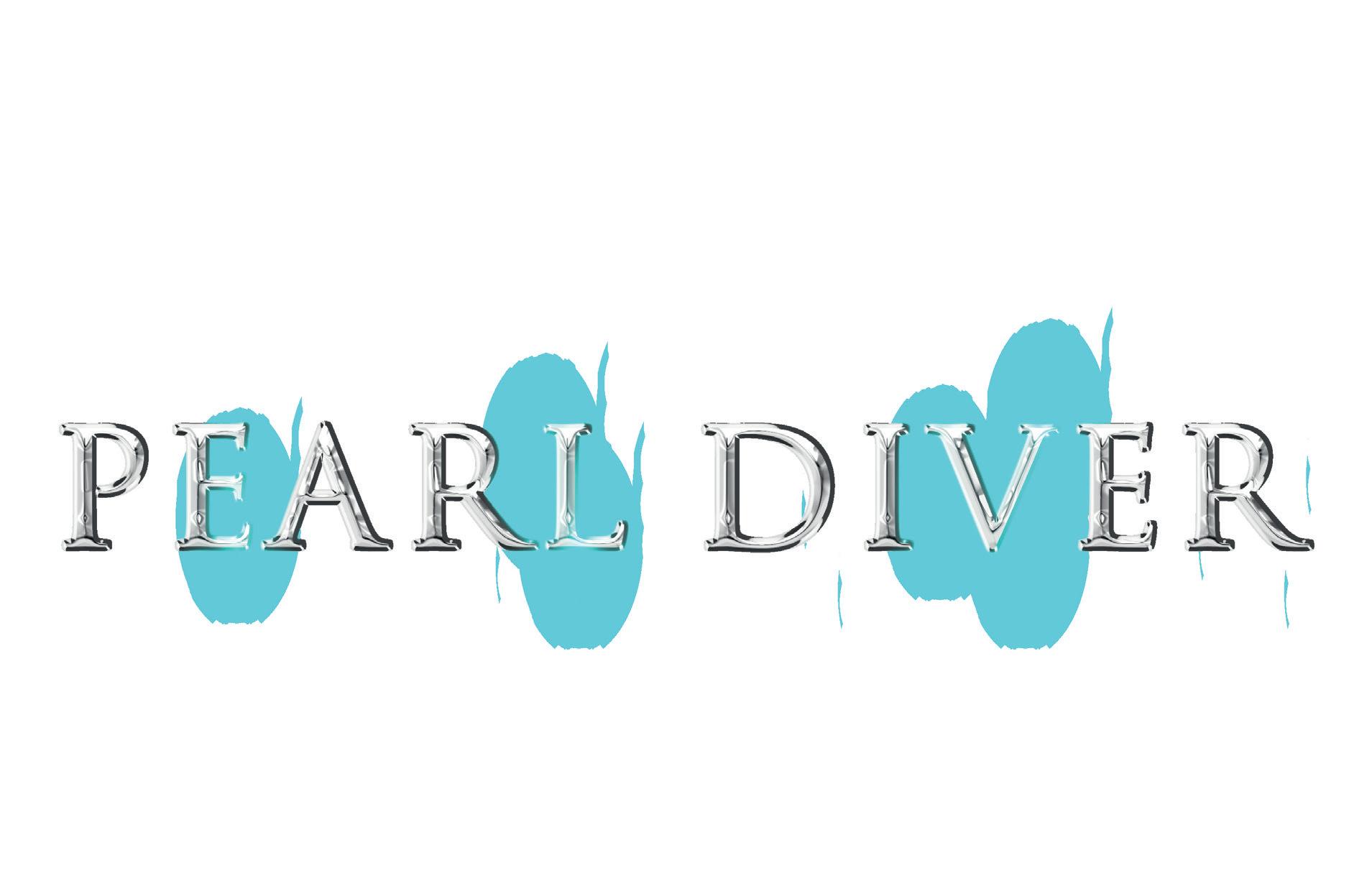


Nestled between ancient deserts and futuristic skyscrapers, the United Arab Emirates (UAE) is a land where tradition gracefully intertwines with modernity. Amid the gleaming urban landscapes, the heart of Emirati culture beats strong, kept alive through time-honored celebrations, festivals that burst with color, and the enchanting allure of traditional games. Let’s embark on a journey to explore the captivating tapestry of culture and heritage that defines the UAE.

Eid al-Fitr and Eid al-Adha are two of the most celebrated occasions in the UAE. Eid al-Fitr marks the of Ramadan, the holy month of fasting, with families gathering for prayers and festive meals. Streets come alive with vibrant decorations, and the exchange of gifts and sweets is a cherished tradition. Eid al-Adha, the Feast of Sacrifice, is a time of gratitude and generosity, as families share meat from the sacrificial animals.
UAE National Day, celebrated on December 2nd, is a glorious ode to the nation’s unity and progress. The skies illuminate with dazzling fireworks, parades showcase the nation’s history, and Emiratis proudly don traditional attire, known as the kandura for men and abaya for women.
Photo by Mo on UnsplashThe UAE’s cultural landscape blooms with festivals that celebrate diverse arts and traditions. The Dubai Shopping Festival invites visitors to indulge in a shopping extravaganza while enjoying concerts, entertainment, and cultural events. The Abu Dhabi Festival showcases world-class performances, from music to dance, bringing global talent to the heart of the UAE. The Al Dhafra Festival celebrates Bedouin heritage, with camel races, falconry displays, and traditional crafts.

Venture into the world of traditional Emirati games, and you’ll be transported to an era of simple joys. Al Saktouna is a game of strategy played with stones, while Al Hawalees involves tossing sticks to land on a marked spot. Liwa is a thrilling camel race that honors the Bedouin tradition of camel breeding. These games not only offer entertainment but also serve as reminders of Emirati history and values.
Hospitality is at the core of Emirati culture. The majlis, a traditional gathering space adorned with comfortable cushions and Arabic coffee, symbolizes the welcoming nature of the people. Visitors are offered aromatic coffee and sweet dates, signifying warmth, and friendship. Emirati cuisine reflects the country’s heritage, with dishes like Al Harees, a slow-cooked mix of wheat and meat, and Al Machboos, a fragrant rice dish with meat.
The traditional Emirati attire is not merely clothing; it’s a statement of identity and heritage. Men wear the kandura, a flowing white robe, while women adorn the abaya, often complemented by intricate embroidery. The ghutra (headscarf) and agal (black cord) complete the ensemble, reflecting the values of modesty and cultural pride.
The UAE’s culture and traditions are a vibrant mosaic that honors the past while embracing the future. From the mesmerizing celebrations of Eid and National Day to the immersive festivals that celebrate arts and heritage, and the enchanting world of traditional games, the UAE offers a treasure trove of experiences for those eager to explore its rich tapestry. As modernity continues to evolve, the Emirati people hold their culture close, ensuring that their heritage remains an enduring source of inspiration and unity in a rapidly changing world.
Contributed by Shakespeare Communications
Cooking activities aren’t just about making delicious meals; they can also be valuable learning experiences for young children. Involving your preschooler in the kitchen can have numerous benefits, including promoting healthy eating habits, developing essential life skills and enhancing their overall development. Let’s explore the advantages of cooking with the young ones and discover some tips to make the experience enjoyable for both you and your child, especially during the summer break.
When kids participate in cooking, they are more likely to try new foods and develop a love for nutritious options. Cooking together provides an opportunity to introduce a wide variety of fruits, vegetables, and whole grains, fostering a positive relationship with healthy eating from an early age.

Cooking activities involve various fine motor skills such as stirring, pouring, cutting and scooping. These all help develop hand-eye coordination, finger dexterity and muscle control. Measuring ingredients and using utensils refine your child’s motor skills and contribute to their overall development.

Cooking offers rich opportunities for language development. As you and your child discuss the steps and ingredients, you can introduce new vocabulary words related to cooking. Describing textures, tastes, and colours enhances their descriptive language skills. Engaging in conversations during cooking also improves their ability to listen, follow directions and ask questions. Just try not to curse if you cut yourself or burn something!
Cooking is a practical way to introduce basic maths concepts to young children. Measuring ingredients, counting and sorting items contribute to early math skills. By involving your child in these activities, you can help them understand concepts like fractions, measurements and sequencing, all while having fun in the kitchen.


Cooking allows children to express their creativity and imagination. They can experiment with different flavours, textures and ingredient combinations. Encourage your child to brainstorm ideas, create unique recipes and decorate their culinary creations. Cooking activities provide a platform for imaginative play, helping them develop their creativity.
Choose age-appropriate tasks like stirring, pouring and tearing ingredients. Ensure proper supervision and safety measures, such as using child-safe utensils and keeping hot surfaces out of reach.
Start with simple recipes and gradually increase the complexity as your child becomes more comfortable.
Make it a sensory experience by allowing your child to touch, smell, and taste various ingredients. Emphasise the importance of cleanliness and hygiene during cooking activities. Encourage teamwork and cooperation by involving your child in meal planning, grocery shopping, and clean-up.
So now you know – there are tonnes of benefits to be gained from cooking with your preschoolers. Not only is a great way to while away an hour or two on a hot summer morning, but you’re giving them a hands-on learning experience that can be both educational and enjoyable. And who knows, maybe your pre-schooler might turn into a leading chef one day… meanwhile, happy cooking!
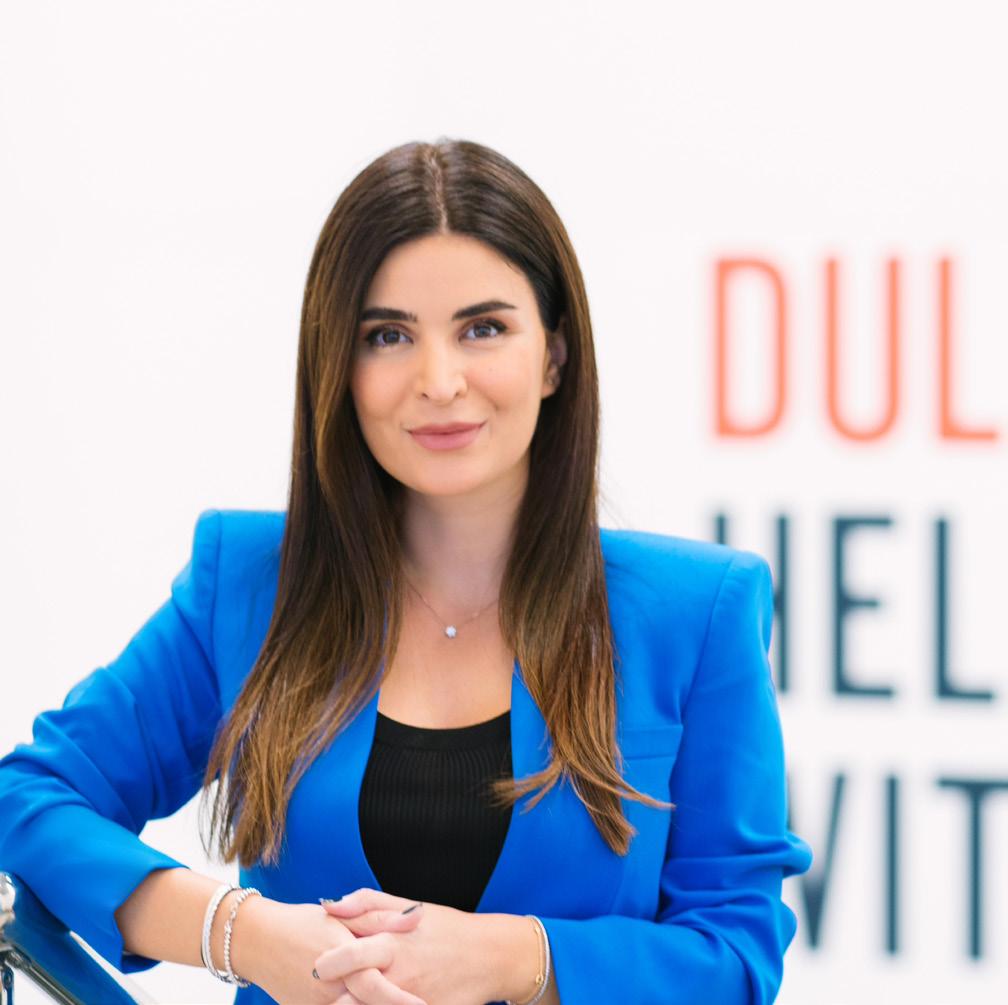
Dulsco Environment is encouraging schools across the UAE to get the new term off to a green start, with a series of simple, sustainability-focused tips that can be adopted in inside and outside the classroom.
With the spotlight on sustainability like never before, Dulsco Environment wants teachers, pupils and parents to think more about recycling, waste management and conserving our environment when schools go back next week – and make sustainability part of their long term goals at school and home.
Joelle Saab, Recycling and Treatment Director at Dulsco Environment“Schools that adopt green initiatives will help the UAE meet its sustainability targets, save on running costs and instill green thinking in the minds of the youngsters of today who will become the leaders of tomorrow. With
COP28 just around the corner, the new school term is the ideal time for everybody to make ecofriendly practices – at school and at home – part of their daily lives.” put up posters – ideally digital or printed on recycled paper – in staffrooms, classrooms, canteens and corridors to build awareness of how to go green. Download a Dulsco poster here. In addition, organise regular awareness sessions about waste recycling and sustainability
RECYCLING BINS:
install colour coded, clearly labelled bins throughout schools to encourage teachers and pupils to segregate their waste at source.
“Sustainability and the environment should be high up on the educational agenda. While there have been great strides in schools’ green initiatives over the last few years, there is still a long way to go.”
replace single use drinks bottles and other items from school and replace them a re-usable, sustainable product;
make recycling a fun challenge by setting goals on waste management and sharing the targets with all teachers, pupils and parents. Track progress, and celebrate milestones as they are reached and nominate monthly recycling champions;
SET TARGETS: hold regular campaigns where pupils bring in paper, cards, cans and plastic for recycling, and unleash younger kids’ creativity by organising waste-to-art sessions;
at school and at home – when nobody is in the room;
FOOD FOR THOUGHT:
cut food waste at the school canteen by customising portions – serve smaller amounts with the option to add, rather than a big portion that may not be eaten. Introduce food composters for leftovers to turn food into a soil enhancer that can be used in school landscaping activities.
pack kids’ lunch bags with reusable water bottles and wrap food in washable, reusable material such as beeswax paper;
if you can’t go digital, use recycled paper pads and colouring books, and make them go further by making more notepads from unused pages;
encourage students to complete their homework and school projects in natural daylight to save electricity – and cut energy consumption bills in the process. If using a desk light, make sure it has an LED bulb;
cut vehicle emissions, reduce traffic jams and boost fitness by walking to school in the cooler months. If walking isn’t an option, try carpooling.
Over the last two years, Dulsco’s team of environmental experts has presented sessions on waste segregation and contributing to the circular economy to more than 3,500 people – including teachers and pupils. And Dulsco Environment’s recycling bus, now a familiar site on the UAE’s roads, visits dozens of schools each year as part Dulsco’s commitment promoting sustainability. To book an awareness session and the bus, call 800 WASTE or email waste@dulsco.com.
The company also provides waste management and recycling services for more than 120 educational establishments in the UAE.

Premium Pakistani restaurant, Little Lahore UAE, launches a new food concept “TUSO by Little Lahore.” Owned by Saira Ahmed, Little Lahore is famous in Dubai for its incredible catering, dine-in and delivery food options. This season Saira has collaborated with her daughter, a certified artist, for the launch of their exquisite express menu, TUSO by Little Lahore that reflects the bond of families and the traditions, culture, and values of a typical Pakistani household.
‘TUSO’ is a comical take on the South Asian expression related to excessive consumption of delicious food. Growing up in South Asia, particularly in the Punjab region, one may have heard this common phrase narrated by parents, grandparents, or other relatives while eating. The saying stems from a place of love and affection, with the elderly wanting their loved ones to have fully immersed themselves in their meal, and more!
TUSO by Little Lahore, offers a lighthearted twist on a few of the restaurant’s most popular items in the form of an express menu where patrons are encouraged to build their own meal step by step, selecting their choice of breads and fillings. These include Roti Rolls, flatbreads rolled to perfection, from the traditional layered paratha to a lighter option of whole wheat tandoori roti, Jab Tak Hai Naan, an assortment of naans with one’s own choice of filling from minced mutton to spicy potato stuffing, Kisne Liya Kisne Diya Quesadilla, TUSO’s twist on the classic Mexican melt with desi flavours, and last but not least Fun Kebab Bun Kebab, TUSO’s very own burgers.
“I am thrilled to bring TUSO to life, Little Lahore has been a passion for me and TUSO is going to add that extra spice”, said Saira Ahmed.”
Little Lahore reminds me of home but TUSO will live the traditional Lahori warmthso TUSO to your heart’s content,”
Saira Ahmed
Contributed
To celebrate this occasion that brings together family, humor, and love for South Asian culture and hospitality, Little Lahore has collaborated with New York-based Pakistani artist Aiza Ahmed, daughter of Saira Ahmed, owner of Little Lahore. Ahmed’s work revolves around her deep attachment to her home country, despite having spent the majority of her time away. Her drawings and paintings stage encounters, experiences, observations, and memories of Pakistani culture, traditions, norms, and society.
Aiza Ahmed: “I am honored to be collaborating with my mother on her latest endeavor. Feels extra special as the concept takes me down memory lane of how I was “TUSO’d” by all the women in my house not just with love, but mouthwatering feasts, and that is reflected in my artwork for TUSO.”
Little Lahore is located at UB-10, Jumeirah Business Center, Cluster G, Jumeirah Lake Towers, Dubai. For more information or to make a reservation, please contact the restaurant at +971 4 441 4270 or email info@little-lahore.com.
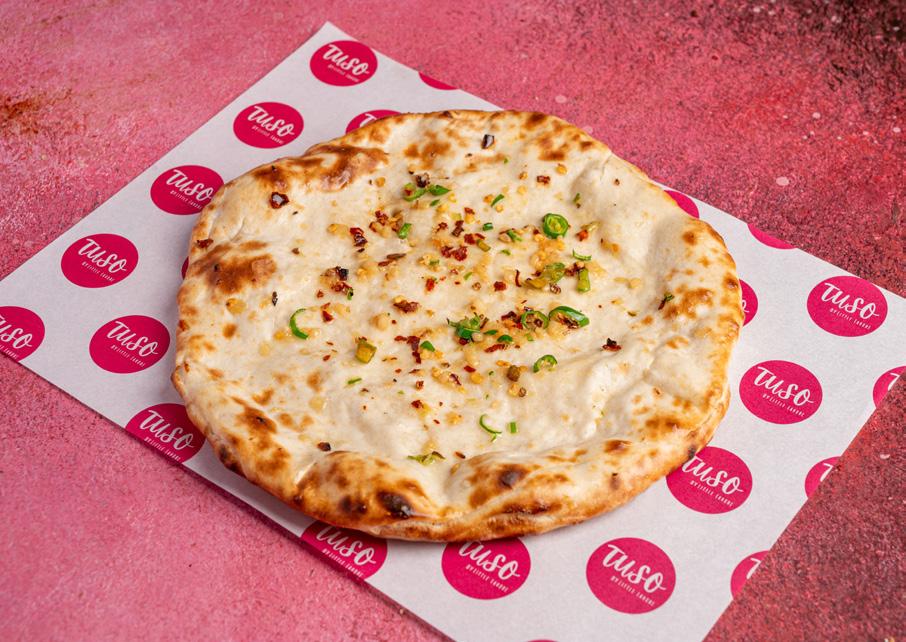


You can also enjoy this from the comfort of your home and office, by ordering online through their website: https://little-lahore.com
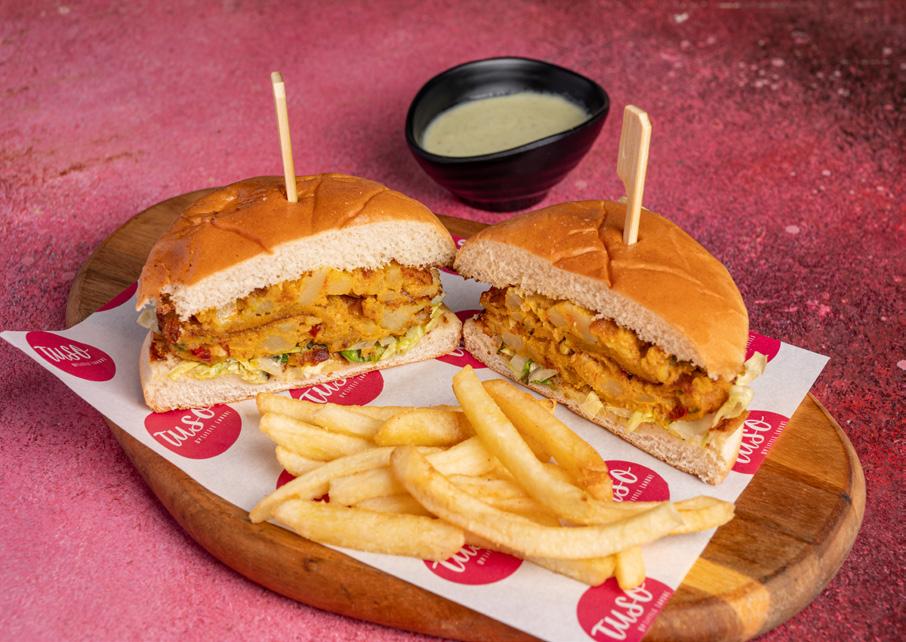 Aloo Bun Kebab (VEG)
Aloo Tikki Roll (VEG)
Chapli Slider
Aloo Bun Kebab (VEG)
Aloo Tikki Roll (VEG)
Chapli Slider
My Second Home, the world’s largest indoor dog park and Dubai’s first and largest luxury pet resort, is gearing up to launch a new daycare and boarding facility exclusively for small dogs as part of its US$10 million expansion plan.


Schedule to open in time for the festive season, the 46,000 sq ft pet destination will be the third resort-style venue for My Second Home, which launched its first luxury home-from-home dog care brand in Dubai Investments Park in 2015, followed by a sister venue in Al Quoz in 2021. Located at DIP 2, the new facility will feature indoor pools , relaxation areas and extensive play space. Its launch comes in response to customer demand for a dedicated venue for small dogs – such as toy breeds and small spaniels – after extensive research and input from hundreds of My Second Home’s 4,000 members. As with My Second Home’s existing destinations, pet pick and up and drop off services will also be available.
Sean Parker, General Manager at My Second Home, said: “All of our dogs are allocated a daycare group to suit their size and temperament, but the reality is that our first two facilities were originally built on the premise that one size would fit all. In our new, small dog venue, every feature –from the pool depth to the low-rise chill-out ledges – will be designed with the smaller breeds in mind.
“The upsurge in pet ownership during the pandemic - particularly of smaller dog breeds and cats –has created huge demand – which we met by building more boarding suites. Across the DIP and Al Quoz facilities, boarding capacity has now reached 250 dogs and 40 cats.”
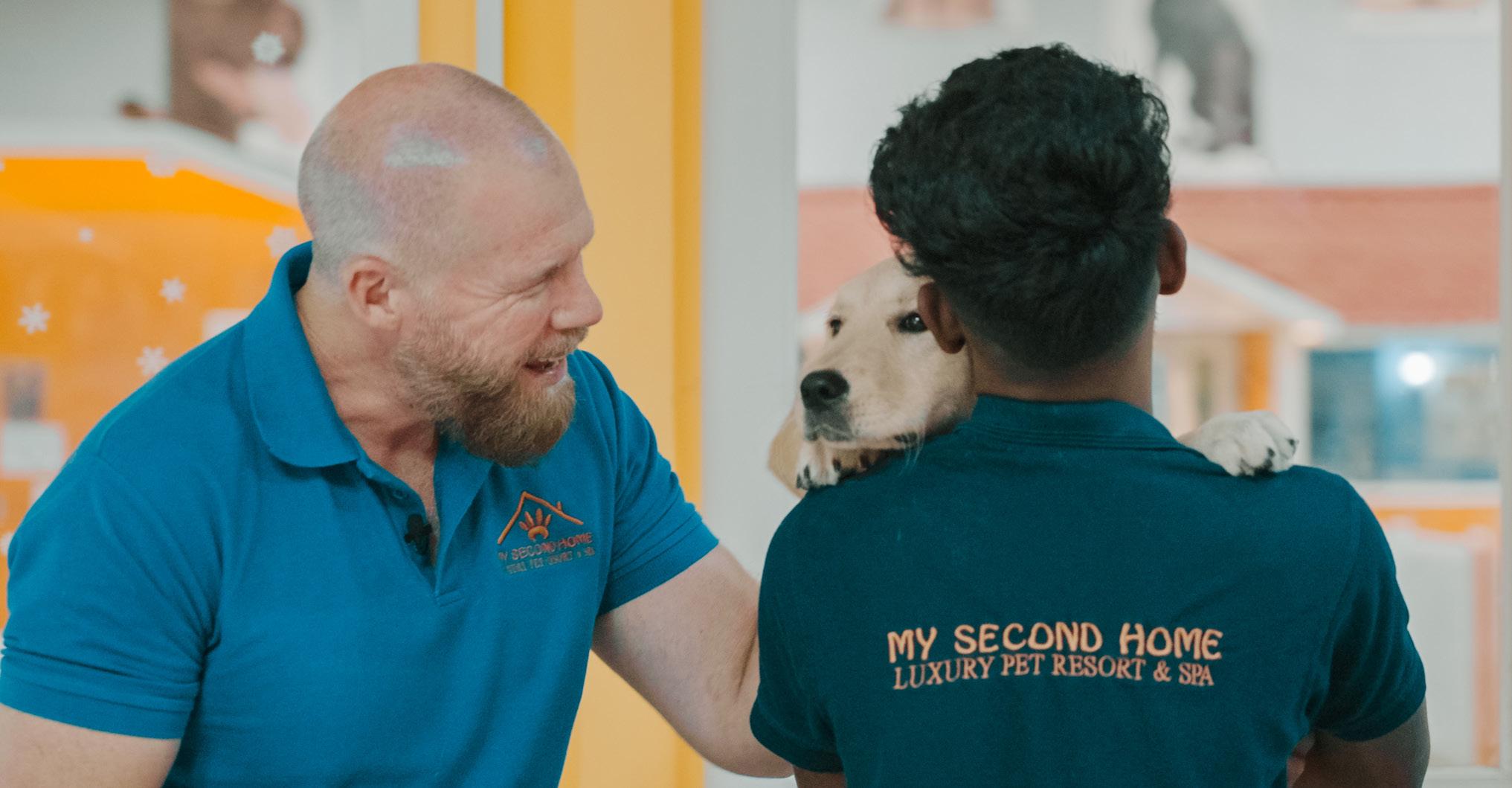
Each day, My Second Home’s boarding, daycare, grooming and training resorts manage the welfare and socialisation of 300 dogs.
The original venue spans 63,000 sq ft – equivalent to around 30 tennis courts – and features the world’s largest indoor free play dog park, three pools and outdoor off-leash play areas. The second, built to meet demand for a replica resort at a convenient location for members from the northern areas of Dubai, offers the same services and quality across 30,000 sq ft. The new, third venue spans a total 46,000 sq ft, including 35,000 sq ft of indoor space.
Paul Sowerby, Co-Founder of My Second Home, added: “My Second Home has been a success from day one. We knew that doing something on this scale could be tricky and that the real test would be succeeding in doing it more than once. Although we’re still learning even after being operational for eight years, we’ve got the business model right and are in a great position to go for a third venue. “Bolstered by demand and feedback from our valued members, we’re ramping things up again in Dubai and exploring potential partnerships outside the UAE. The model works - and is very portable.” Aside from the expansive indoor and outdoor recreation and socialisation space that My Second Home resorts provide, it’s the attention to detail, rigid safety regime, welfare protocols and commitment to pet wellbeing and enrichment that appeal most to users.
Longstanding customer Graham Silverlock, owner of two young cocker spaniels, said: “Pet owners know what they want, and they want it consistently. That’s a big challenge for dog daycare and boarding businesses that set their stall out to provide a world class service all day, every day. Our dogs mean the world to us and it’s important to know that the service level will be right every time. That’s the My Second Home difference: they have the time to understand our family’s needs - and particularly those of our beloved Bossie and Tupsu.”
For more information on My Second Home, visit the website, email info@mysecondhomedubai.com or call 04 881 8002.

The Arabic language, with its rich history and intricate calligraphy, has long captivated the minds and hearts of language enthusiasts around the world. Learning Arabic goes beyond just acquiring a new skill; it’s an exploration of a fascinating culture, history, and tradition. To make your Arabic learning journey both enjoyable and insightful, here are some tips, engaging activities, must-know phrases, and cultural insights that will not only help you learn the language but also foster a deep appreciation for its beauty.
The elegance of Arabic calligraphy is unparalleled. Learning about different calligraphic styles not only familiarizes you with the script but also allows you to connect with the history of the language. Try your hand at practicing basic strokes and letters using traditional calligraphy pens. This activity not only enhances your writing skills but also fosters an understanding of the intricate beauty of Arabic script.
Music transcends language barriers, and Arabic music is no exception. Listen to Arabic songs, paying attention to the lyrics and trying to understand their meaning. Websites and apps often provide translated lyrics, making it easier to follow along. By immersing yourself in the melodies of Arabic tunes, you’ll unconsciously absorb new vocabulary and phrases.
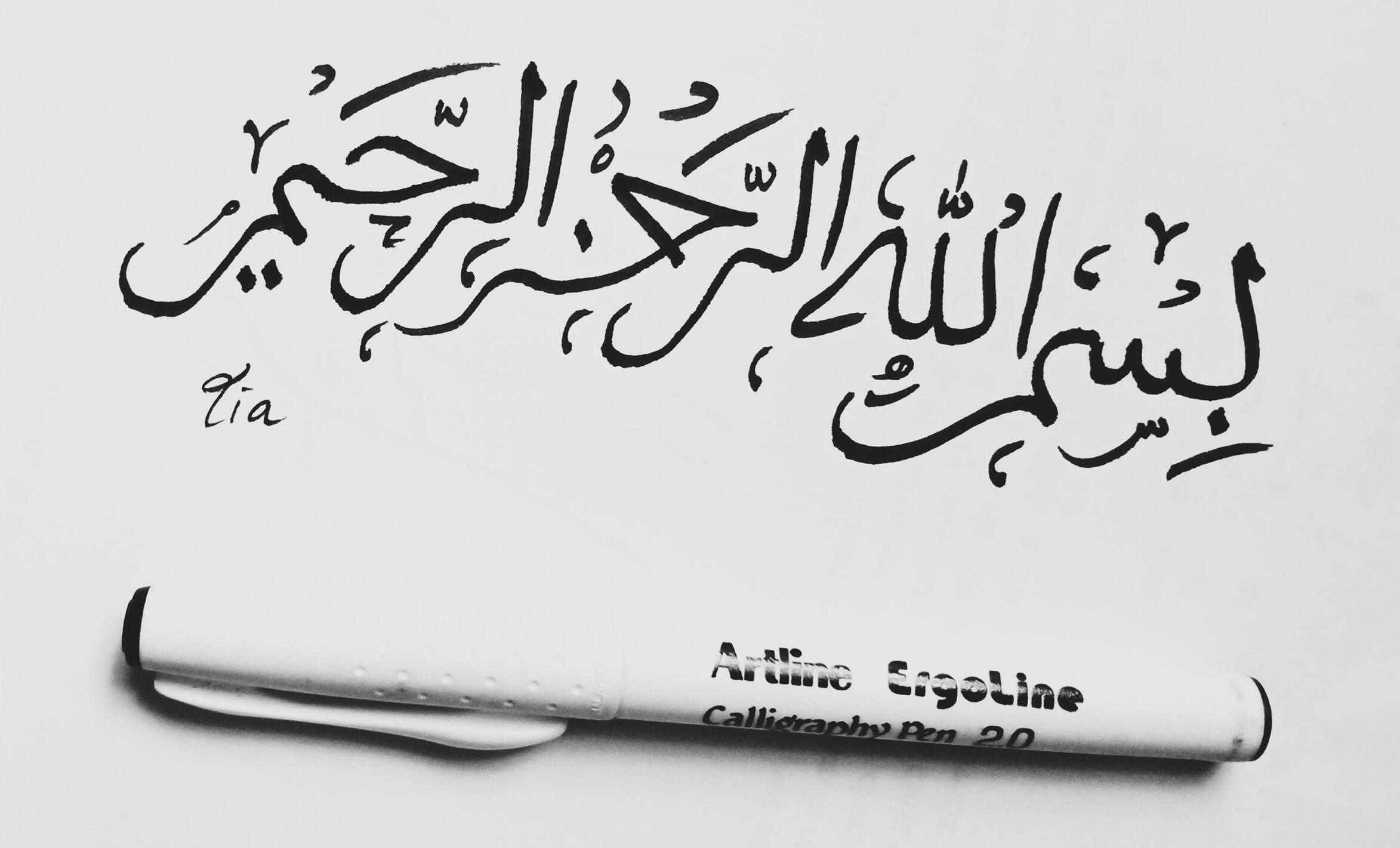 2. EMBRACE ARABIC MUSIC: THE RHYTHM OF LANGUAGE
2. EMBRACE ARABIC MUSIC: THE RHYTHM OF LANGUAGE
Food is a universal language, and Arabic cuisine offers a delicious way to learn. Try cooking traditional dishes like hummus, falafel, or shawarma while learning the names of ingredients and cooking techniques in Arabic. As you savor your creations, you’ll feel a deeper connection to the culture and language.
Learning a new language is a journey, and consistency is key. Dedicate a few minutes each day to practicing Arabic phrases. Start with simple greetings and common expressions. Apps and language learning platforms often offer bite-sized lessons that fit perfectly into your daily routine.
Watching Arabic films or TV shows with subtitles can significantly enhance your listening and comprehension skills. Pay attention to the way characters speak, their intonation, and gestures. This exposure to real-life conversations will help you adapt to the rhythm of spoken Arabic.
Arabic proverbs are windows into the culture’s values and beliefs. Learn a new proverb each week, delving into its meaning and usage. Not only will this expand your vocabulary, but it will also offer insights into the cultural nuances of Arabic-speaking societies.
Arabic is deeply intertwined with the culture and history of the Middle East and North Africa. Take the time to explore the cultural contexts of the language. Research the history, traditions, and customs of Arabicspeaking regions. This understanding will give depth to your language learning and foster a genuine appreciation for the culture.

Learning Arabic is not just about acquiring a new skill; it’s a journey of discovery that opens doors to a rich and diverse culture. By embracing calligraphy, music, cuisine, and more, you’ll find that the language comes alive
in ways that textbooks alone can’t achieve. With dedication and enthusiasm, you can embark on a captivating adventure of linguistic and cultural exploration that will reward you for years to come. As you navigate the intricacies of the Arabic language, you’ll find yourself enriched with knowledge and a profound respect for a culture that continues to inspire the world.
Kids’ fashion is nothing new. Since movie stars have been clothing their children in the same designer clothes for decades and Baby Dior is celebrating its 50th anniversary this year, fashionable children have always existed.
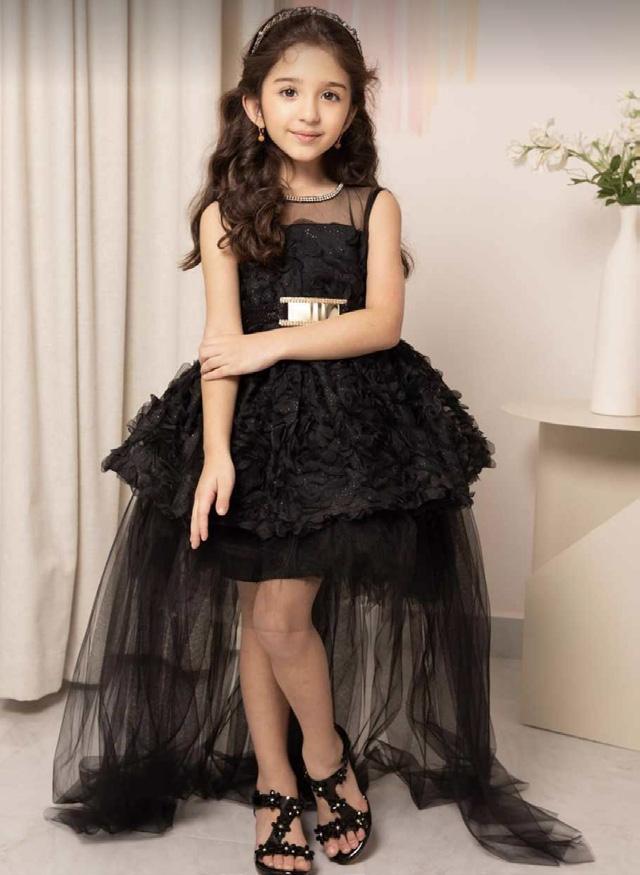
Boys’ and girls’ attire were interchangeable until the early 20th century. Kids were just kids, nothing more. It didn’t matter what they were. Everyone wore the same item since it was convenient to do so.
Before the twentieth century, kids of both sexes wore the same clothes and had the same hairstyles. Gowns, tunics, and robes were worn by both men and women from the sixteenth through the twentieth centuries. Only after men’s clothing changed to include two-piece suits, shirts, and breeches did the gown become a thing for women, infants, and toddlers.
Patterns and colors didn’t start to appear on children’s clothing until the 1920s. These designs, which typically feature floral or animal motifs, became to be connected to one sex or
the other over time.
Girls’ clothing would start to include flowers and kittens, while males’ clothing would feature drums and puppies. Surprisingly, blue was the preferred color at the time for females and pink for boys. At the time, many believed that pink was a tint of red and so the color of Mars, the god of war, and that blue was the color of tranquility and peace and therefore more appropriate for girls.
Kids’ fashion is the term used to describe fashions in children’s apparel and accessories. Kids’ fashion includes a vast variety of styles, trends, and apparel items, just like adult fashion, but it is catered to children’s interests, needs, and sizes. It comprises apparel, accessories, and footwear for newborns, toddlers, kids, and occasionally teenagers.
Based on elements including age, gender, cultural influences, and regional trends, children’s fashion can differ widely.
Age-Related Styles: The appropriate styles depend on the child’s age. Infant clothing typically focuses on comfort and ease, although clothes for older kids may more accurately represent current trends given their age group.

Seasonal Trends: Kids’ clothing follows seasonal trends in the same way that adult clothing does. You can get various designs and materials for each season, such as summer fabrics that are light and winter designs that are warm and inviting.


Durability: Kids are frequently active, and they can be hard on their clothes. Kids’ clothing therefore frequently emphasizes strong materials and construction to survive the abrasion of daily activity.
Bright colors, interesting patterns, and whimsical designs are frequently used in children’s fashion to appeal to kids’ imaginations and sense of enjoyment.
Clothing with a theme or character: Numerous children’s clothing items feature popular film, television, and cartoon characters. Children who want to wear clothes that features their favorite characters frequently have a strong demand for these products.


Comfort: As children’s clothing should allow for movement and play, comfort is an important factor in kids’ design.
In the past few centuries, kids fashion changed. We are getting in the Metaverse like that stood up these days not only in the market but also in the industry.

